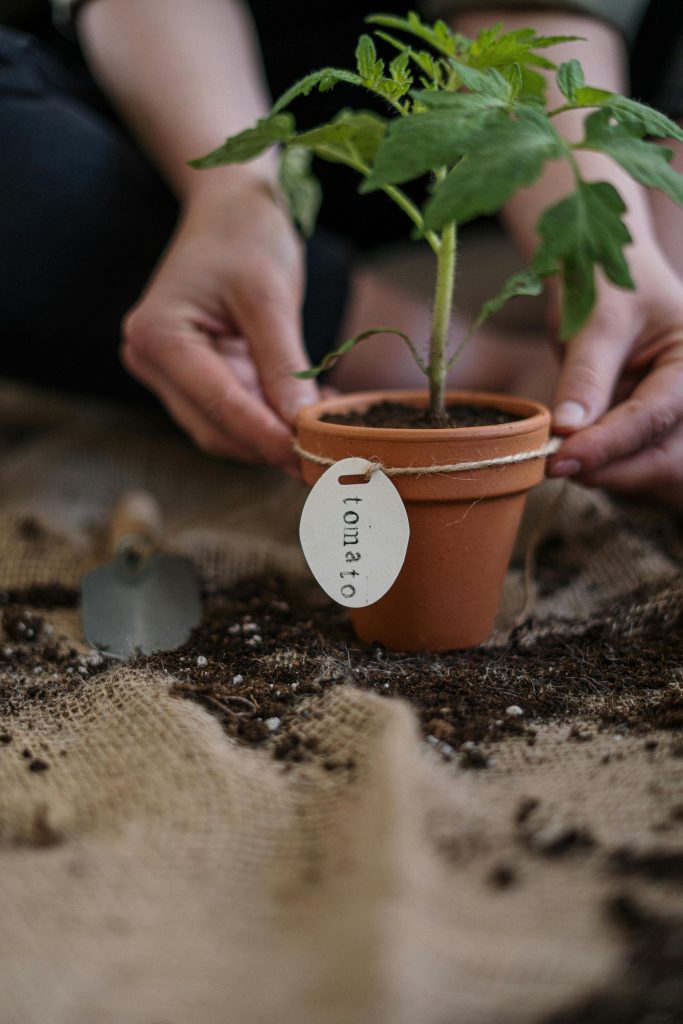The Plum Tomato: Garden to Table
In the vast realm of culinary delights, few ingredients hold the esteemed status of the plum tomato. With its rich history, distinct flavor profile, and versatility in the kitchen, this humble fruit has carved a special place in the hearts of chefs and home cooks alike. Join us on a journey through time as we explore the captivating story of the plum tomato, from its introduction to North America to its cherished status in modern cuisine, and uncover the secrets to growing and caring for this beloved plant.
A Glimpse into History
The tale of the plum tomato begins centuries ago in the sun-kissed fields of South America. Believed to have originated in Peru, these tomatoes were cultivated by ancient civilizations long before the arrival of Europeans. It wasn’t until the 16th century that Spanish explorers encountered this vibrant fruit and introduced it to Europe, where it quickly gained popularity for its distinct flavor and culinary versatility.

Fast forward to the late 19th century, and the plum tomato found its way across the Atlantic to North America. Italian immigrants played a pivotal role in bringing this beloved ingredient to the United States, where it soon became a staple in both traditional Italian cuisine and American cooking.
Why a Plum Tomato?
What sets the plum tomato apart from its round counterparts is its unique shape and texture. With a firm, elongated body and fewer seeds than other varieties, plum tomatoes are prized for their meaty flesh and rich flavor. Their dense texture makes them ideal for sauces, soups, and stews, as they hold their shape well when cooked, imparting a robust taste to any dish.
One of the most beloved qualities of plum tomatoes is their natural sweetness balanced with a subtle acidity, lending depth and complexity to a wide range of recipes. Whether roasted to caramelized perfection, simmered into a velvety marinara sauce, or simply sliced and enjoyed fresh in salads, plum tomatoes add a burst of flavor to any culinary creation.
Recipes to Savor
The culinary possibilities with plum tomatoes are truly endless. For a classic Italian dish that celebrates the essence of these tomatoes, look no further than spaghetti alla puttanesca. This savory pasta dish features a piquant sauce made with plum tomatoes, olives, capers, garlic, and anchovies, creating a symphony of flavors that will tantalize your taste buds.
For a lighter fare, try grilling halved plum tomatoes and serving them atop crusty bread with a drizzle of olive oil and a sprinkle of fresh herbs for a simple yet satisfying bruschetta. Or, for a comforting weeknight meal, whip up a batch of creamy tomato basil soup using plum tomatoes for a velvety texture and vibrant taste that will warm you from the inside out.

Pro Tip – Plant Sideways
You read that right! Your plum tomato plant should be started indoors 6-8 weeks before last frost. Once your seedlings are ready to be planted out, you’ll notice tiny hairs all along your plant’s stem. Each of those tiny hairs has the potential to root into the ground, and your plum tomato will benefit from the additional root system. To achieve this, dig a trench in the soil rather than a hole, and lay your seedling on its side in the trench. Cover the roots and stem with soil and let the top leaves of the tomato out with good access to sun. Water thoroughly and watch your tomato begin to grow upward over the next few days. Your tomato will now be more resilient, since it has more roots to access water more efficiently!
5 Steps toGrowing and Caring for a Plum Tomato Plant
Whether you’re a seasoned gardener or a novice enthusiast, growing plum tomatoes at home is a rewarding experience that allows you to savor the fruits of your labor—literally. To ensure a bountiful harvest, here are some tips for successfully cultivating and caring for the plum tomato:
1. Choose the Right Variety There are numerous varieties of plum tomatoes to choose from, each with its own unique flavor profile and growing requirements. Select a variety that is well-suited to your climate and gardening space, ensuring optimal growth and productivity.
2. Provide Adequate Sunlight
Plum tomatoes thrive in full sunlight, so be sure to plant them in a location that receives at least six to eight hours of direct sunlight per day. This will promote healthy growth and encourage the development of flavorful fruit.
3. Ensure Proper Drainage
Good drainage is essential for plum tomatoes, as they are susceptible to root rot if they sit in waterlogged soil. Plant them in well-draining soil amended with organic matter to improve drainage and fertility, and avoid overwatering to prevent waterlogged conditions.
4. Support and Prune
As plum tomatoes grow, they will benefit from the support of stakes, cages, or trellises to keep their vines upright and prevent them from sprawling on the ground. Additionally, regular pruning of excess foliage will promote airflow and reduce the risk of disease, ensuring a healthy and productive plant.
5. Fertilize Wisely
To fuel the growth of your plum tomatoes, fertilize them regularly with a balanced fertilizer rich in nitrogen, phosphorus, and potassium. Avoid over-fertilizing, as this can lead to excessive foliage growth at the expense of fruit production.

By following these simple guidelines, you can cultivate a thriving crop of plum tomatoes that will provide you with an abundance of delicious fruit throughout the growing season.
In conclusion, the plum tomato stands as a testament to the enduring appeal of fresh, wholesome ingredients in our culinary landscape. From its ancient origins to its modern-day prominence, this versatile fruit continues to captivate our palates and inspire our culinary creations. Whether enjoyed fresh from the vine or incorporated into a savory dish, the plum tomato remains a cherished favorite among chefs and home cooks alike, reminding us of the simple joys found in nature’s bounty.
